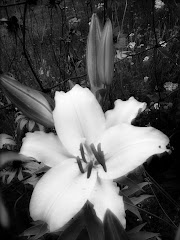
Life is a series of rituals.
--------------
One of my favorite rituals is the gathering of orange cosmos seeds in mid-September. Every year, I collect enough (about three pickle jars full) to reseed the annual beds and give away to family and friends. Cosmos seeds, like marigolds or forget-me-nots, are easy to collect and store. I save money on annuals by collecting the seeds or, as is the case of geraniums, digging them up before the first frost. I plant the seeds after Mother's Day, typically the frost-free date in Zone 5.
--------------
--------------
Although orange cosmos is a wildflower native to the Southwestern U.S. and Mexico, it does extremely well in our hot Ohio summers. Cosmos love full sun and arid soil. The majority are planted along the foundation in the backyard. Its brilliantly tangerine color and daisy-like flowers bloom from mid to late summer or until the first fall frost. Year after year, praying mantis have used the cosmos as their niche. Mantis are a curious and beneficial insect; and most welcome in the garden.
--------------I have been cultivating orange cosmos for fourteen years. And to think, this ritual began with one pack of seeds!













